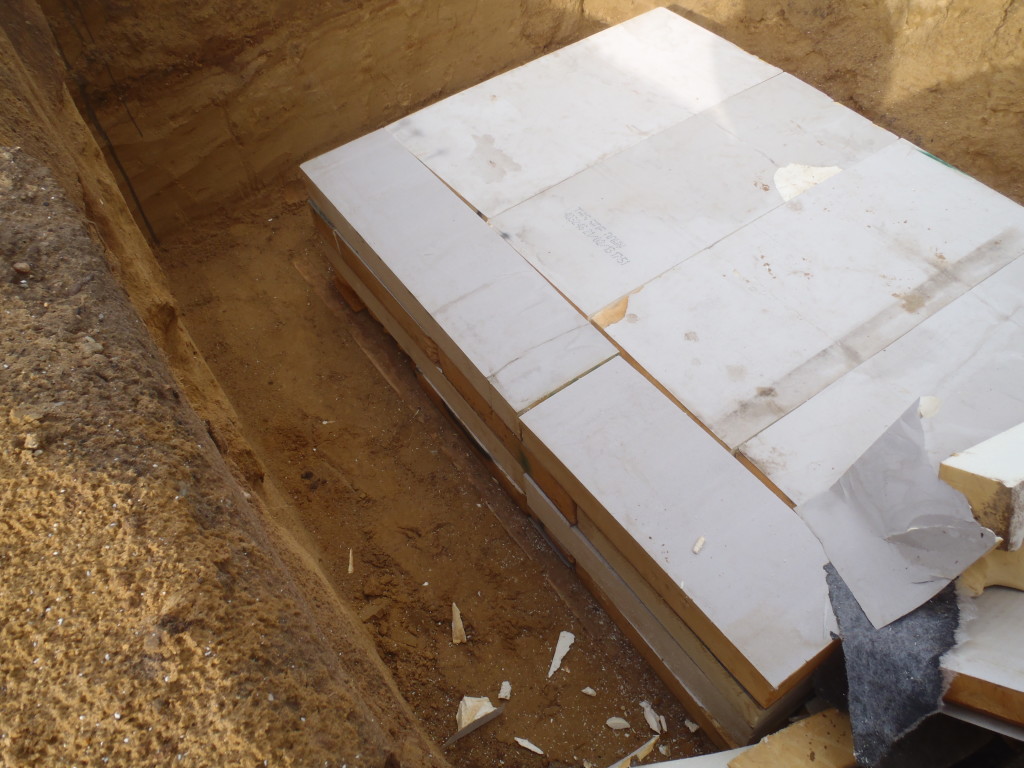Today, we dug out the bottom of the hole of the Number 4 Energy Module and inserted the two guide rails to scrape flat the bottom. We then washed the 12 Aquacell plastic crates we needed for this module. We also selected a heap of PU insulation boards and started lying them out on the bottom to form 4 layers, one of 100mm thick, followed by a 140mm thick layer and topped with two layers of 120mm thick foam boards, making a grand total of 480mm thickness of insulating barrier to keep as much heat in this energy module. PU foam is about 0.02 Watts per Celsius per metre thickness so with the thickness at nearly 500mm or 0.5 of a metre, then the U value of this particular part of the insulated bottom of the tank is approximately 0.04 Watts per degree Celsius per square metre of exposure. Now the square area of the bottom is 2metres by 1.5metres which makes 3 square metres so the total heat loss of the bottom portion is 3 times 0.04 (the U value) which is 0.12 Watts per degree Celsius. The maximum temperature we are likely to get in this energy module is about 80°C and so the temperature different between the hot water and the surrounding sandy soil would probably be about 70°C (hot water at 80°C and sandy soil about 10°C so the difference is 70°C). So we would be losing about 70 times 0.12 which equals 8.4 Watts. Another way to look at this heat loss is to change the word Watts into the SI units of Joules per second and there you have it! The hot water would be losing nearly 9 Joules every second all the time, until all the heat is gone! It is a little more complex than that (sigh!) but that is basically the calculation to work out what heat loss we would have to suffer when we have maximum heat storage. Don’t forget, this 9 Joules per second is ONLY for the bottom insulated layer – we have NOT calculated the 4 sides yet and the top too!!! Smile!
Tomorrow, we will start assembling the plastic crates!
